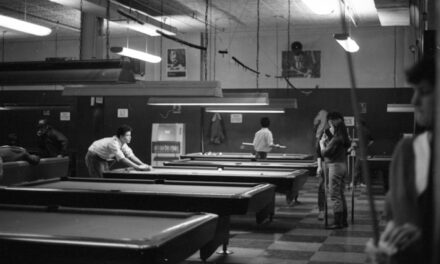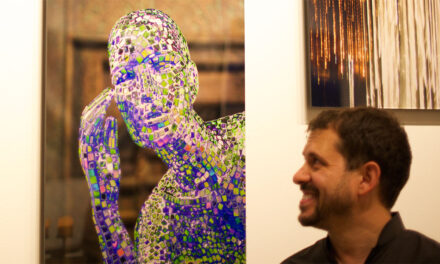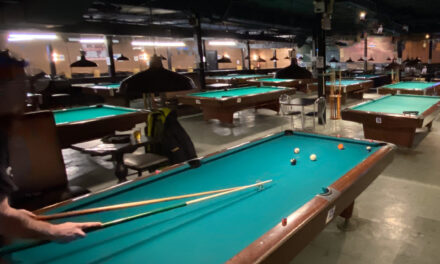The photo professor at Bennington College had an assignment he would give every Fall to incoming students. “Find and Photograph a Fire Hydrant.” I did not take his intro class, but I spoke with him about the assignment when I saw a row of matching prints posted on the wall outside the darkroom.
“Neil,” I asked, “why do assign this same project every year?”
He gave the look of a knowing professor, and countered with a smile, “Why do you ask? You don’t think this is a good project?”
It felt like a trap, but I spoke my mind, “Well, it doesn’t seem very creative. The ‘urban machinery’ pictures of subways and traffic lights and fire hydrants have been done millions of times. It’s old and basic. How many ways are there to do it? I mean, that’s why all the pictures look alike, there’s no room to be creative.” And that’s when I got the broad smile.
Neil jumped in, “First let me stop you right there. I’ve been giving this assignment over ten years, and I have never seen exactly the same picture twice. Each picture is taken at a different time of day, or from a different height, or a different angle, or from a different distance… I’ll concede that many are similar, but truly no two are identical.”
“Those are very small differences,” I protested, “so it still seems uncreative to me.”
“Okay, if you really want to understand why I give this assignment, I’ll explain it. First, it might look like one lesson but really there are two lessons here, and each is important. The first lesson is taking the picture, and the second lesson is the experience of class critique after the assignment is turned in.” Now Neil seemed truly excited to be sharing the hidden wisdom behind his apparently basic project.
He continued, “When taking the photo, you’re right, it’s incredibly frustrating. Everyone wants to be creative and unique, especially at this school. The assignment leaves few choices, so the photographer must stretch to consider them all. Day or night? Natural or artificial lighting? I’ve seen it done in silhouette with the sun behind. Is the hydrant large or small in the frame? Near or far? Use a macro lens and get close to the texture, or show the whole form? How high is the camera? Eye-level, hydrant-level, looking up from the ground, or directly above. Focused or blurry. High or low contrast. Is the hydrant on the left, right, or center of frame? What about props or background? One time someone put a hat on it. Another student made a nude self-portrait standing behind the hydrant. Get it?”
“Okay, but that still sounds to me like you’re admitting there’s not much to this project, which is what I said. The nude photo is funny, but that’s almost a cheat,” I protested, “Like I said, it’s a boring assignment.”
But as Neil explained the other half, I began to appreciate the project in a new way. “Okay, so there are few options when taking the picture. Then comes the in-class critique.” Where I went to college, nearly all art classes involved weekly commentary on each others’ work. It’s a lesson in how to defend one’s work, how to articulate opinions, and of course humility. And it meant students were getting more opinions than just their teacher’s.
The lesson made more sense as Neil went on, “So obviously most of the pictures on the wall are similar. They are competently focused, with the hydrant clear against the background, and taken at the photographer’s own eye level.” He paused for another knowing grin. “When the whole class sees each others’ assignments on the wall, there are always a few students who did something unusual. Most don’t, but some do. It’s a powerful lesson for all the students who did the 1-minute version of the project. If you want to be a photographer, you need your work to stand out. There will always be a room full of people who did the obvious thing, and that will never win.”
Boom.
Neil hammered the point, with “The tight requirements of the project do not actually stifle creativity; they provide a framework that allows it to bloom.” He continued, “How can I teach someone to take a great picture of something complicated, like a portrait? A model is impatient, constantly moving, and contributes their own creativity in the form of gesture. Starting the semester with a single assignment about an inanimate object is a good way to begin, because it is a pure exploration with limited variables. It forces you to think.”
As I quietly digested these ideas, I tried to contribute to something to the conversation. “I guess there’s also creativity in the choice of fire hydrant, right?” And that got the first laugh out loud from Neil.
“Hah, city kid. We don’t have many fire hydrants in Vermont. There’s only one on our entire campus, right near Commons where everyone can find it.”






While I never took Photography at Bennington, Neil was really supportive of visual oriented work at a time when the college was sinking into a pit of conceptual art. I enjoyed his support and input during the VA faculty group crits. He was always good to chat with informally too and seemed to be in the VA office as frequently as Sue Rees was. RIP Neil
As for the subject, the hydrant assignment would seem to be a good starter to assess what the students are capable of. I don’t really remember the hydrant on campus at all, though.